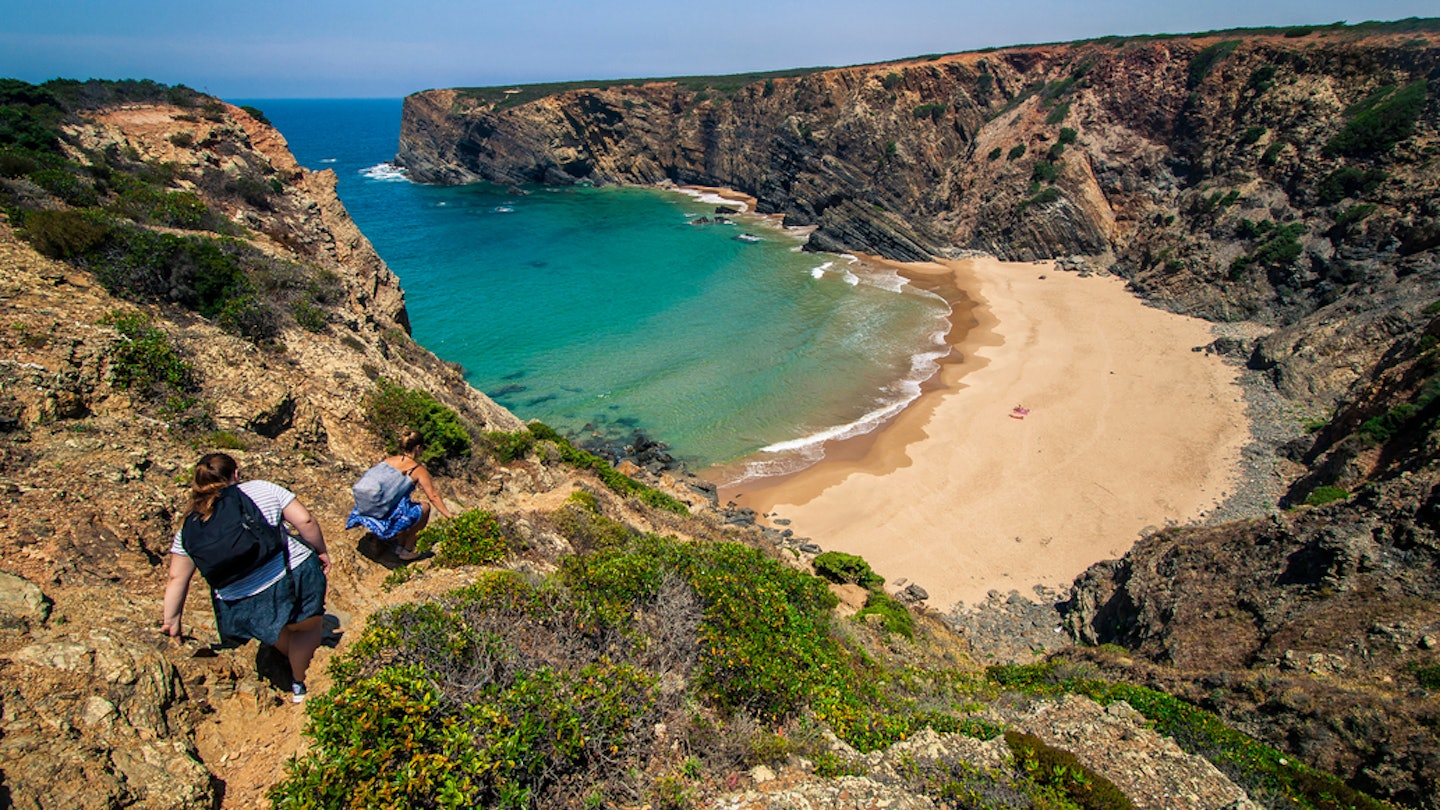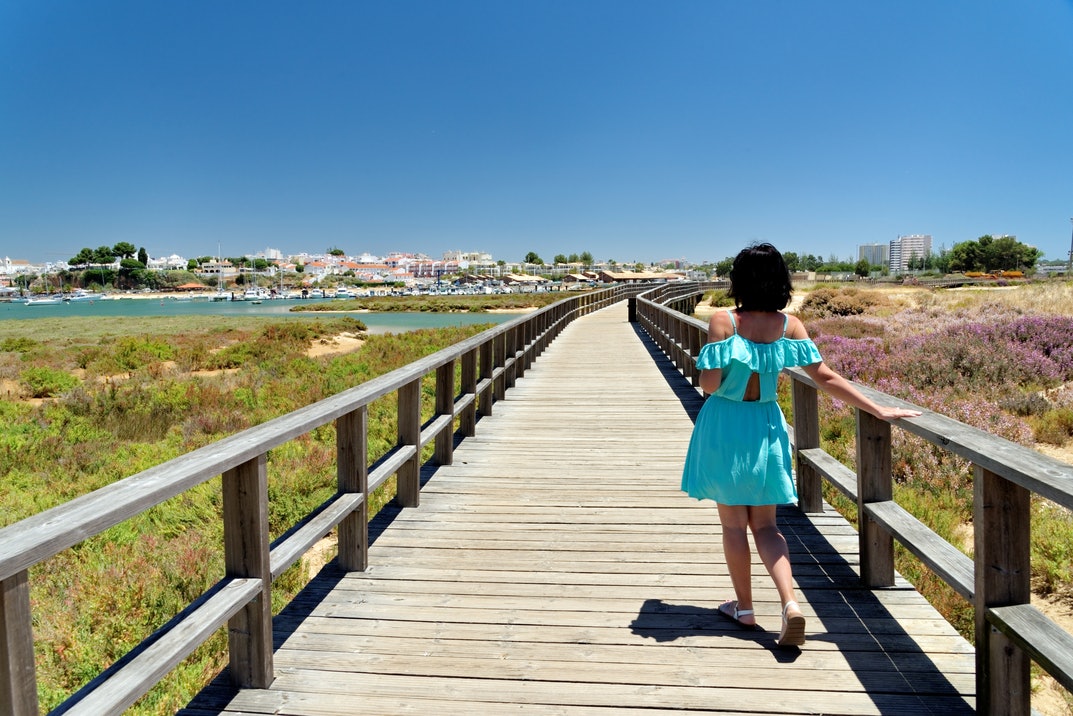
The 30 best countries, cities and regions to visit in 2025

Jun 28, 2022 • 6 min read

Here's why you should visit the Algarve's best nature reserves © Raphael Rivest / Shutterstock
Wind-whipped sea cliffs, sandy islands and biologically rich wetlands set the stage for wide-ranging adventures in the Algarve. Whether you’re hoping to spot unique wildlife, get active (biking, hiking, kayaking), or just want to dig your heels in the sand along a remote beach, southern Portugal has some captivating destinations to explore, including these top five nature reserves.
One thing to keep in mind: there isn’t much shade here. Be sure to pack ample sun protection (hat, sunglasses, heavy-duty sunscreen) and consider going early in the morning or late in the afternoon to beat the worst of the heat – which is incidentally the best time to see wildlife.

Nature’s might and beauty reach a crescendo as the Atlantic crashes into soaring cliffs along the western Algarve. Craggy headlands, lone lighthouses and wild, windswept beaches dot this dramatic coastal reserve running from east of Sagres all the way up to Porto Covo in the Alentejo.
Surfers flock to the great waves near tiny villages like Carrapateira and Aljezur. Walkers come to traverse a section – or the entirety – of the Trilho dos Pescadores. This 227km (141 miles) trail, one part of the Rota Vicentina, offers some of the best hiking in the Algarve. In fact, it ranks among the world’s most spectacular coastal walks.
Other visitors come simply to experience the landscape, which is home to unique plant and animal species, including otters, which are rarely sighted in other marine habitats in Europe. You might also come across white storks – the reserve is one of the only places in the world where they build nests along the coastal cliffs.
How to get to Parque Natural do Sudoeste Alentejano e Costa Vicentina: The N-120 and N-268, both just inland from the coast, provide access to the Algarve section of the reserve. You’ll want a good map handy, however, to turn off the highway and arrive at well-hidden beaches like rocky Praia da Barradinha, cliff-backed Praia da Arrifana and Praia da Amoreira, which is beautifully set near the mouth of the Aljezur River. Wherever you roam, don’t miss the views from the Cabo de São Vicente. Located near Sagres, this lighthouse-topped cape marks Europe’s southwesternmost point.

The less-visited eastern Algarve harbors many surprises including the Parque Natural da Ria Formosa, a vast protected area of barrier islands, tidal flats and undeveloped beaches. You can spend the day kayaking through calm waters, watching ospreys soaring overhead, or walk along smooth trails past prime habitats for unique species like the purple swamphen, the symbol of the park.
Unlike some of the other reserves in the Algarve, this park has ideal places for cycling, with wide-level paths allowing you to cover more distance than you would on foot. The islands of Faro, Barreta, Culatra, Armona and Tavira are also part of the reserve. After looking for wildlife, you can hop on a ferry for a relaxing afternoon on pristine shorelines that stretch for many kilometers.
Within the reserve, you might spy locals going about traditional activities, including salt extraction, fishing and the gathering of shellfish and bivalves. You can see (and taste!) the fruits of their labor in Olhão. The small village is home to one of the largest fish markets in the Algarve as well as some outstanding and unpretentious seafood restaurants (the briny, garlic-infused clam dish known as amêijoas à Bulhão Pato is a must to try).
How to get to Parque Natural da Ria Formosa: For a useful overview of the park, head to the Centro de Educação Ambiental de Marim (CEAM), which has bilingual exhibitions on the park, as well as short trails and several hides for watching birds. Various outfits in Faro lead organized trips into the reserve, traveling by motorboat, kayak or on foot. One of the most eco-conscious operators is Formosamar. You can reach Ilha de Faro by car, bicycle or on foot, while Tavira is accessible by ferry, on foot or by mini-train from Pedras d’El Rei. The other islands can be reached only by boat, via short jaunts from nearby towns like Olhão (for Armona and Culatra) or Quatro Aguas (for Ilha de Tavira).

While lacking the drama of crashing waves against coastal cliffs, the Reserva Natural Ria de Alvor has a quiet beauty that rewards mindful walks. The western Algarve’s most important wetland habitat encompasses mudflats, sandbanks, and marshy areas, and it’s a draw year-round for birdwatching, though you might also spot foxes, hedgehogs and lizards. Come in spring and fall to see unusual species like the purple heron.
Boardwalk paths take you across a great swath of wetlands, making the 1500-hectare (3706-acre) reserve a good option for visitors with limited mobility. You can also follow dirt trails inland that follow the Alvor River to the village of Mexilhoeira Grande or walk along the beach of Praia de Alvor, which is also part of the reserve. Given the ease of access and the possibility of beach time at the end of the walk, this is one of the best reserves in the Algarve for families.
How to get to Reserva Natural Ria de Alvor: Boardwalks into the reserve are easiest to access just south of the center of Alvor. If you’re driving there’s a sizable parking lot off Marginal de Alvor. For a riverside walk, follow the Rua da Ribeira north to the unmarked trails leading north and west of the village.
Even in the busiest parts of the Algarve, you can find nature escapes. Just west of Albufeira, clifftop paths wind through the compact (and unmarked) Reserva Natural Caminho da Baleeira. Here you can enjoy breezy views out to sea while following the tracks hugging the coastline. Wear good walking shoes to hike the rocky terrain down to cove-like beaches like Praia do Arrifão, which you’re likely to have entirely to yourself. Near the eastern end of the reserve (about 1km/0.6 miles walk from the start) you’ll reach the Ponta de Baleeira, affording views over the sparkling marina of Albufeira, and the white-washed buildings of the city center beyond.
How to get to Reserva Natural Caminho da Baleeira: It’s easiest to access the reserve from its western side. You can park or take a taxi to the parking lot near Praia de São Rafael and start from there. You can also get to the paths from the first part of Caminho da Baleeira, although there is limited parking on this villa-lined road.
Head inland from Vila Real de Santo António, on the Algarve’s easternmost fringe, and you reach a landscape of marshlands, creeks and canals, along with salt pans that pre-date the Romans – and are still in use today. You can look for storks, black-winged stilts and flamingos, and gain insight into the many centuries of human presence in this remote corner of Portugal. There are Roman ruins and medieval castles, like the hilltop citadel of Castro Marim, which affords fine views over the reserve.
How to get to Reserva Natural do Sapal de Castro Marim e Vila Real de Santo António: It’s an easy drive or bike ride from Vila Real de Santo António into the heart of the reserve. Northeast of Castro Marim is a small nature center with displays about the area’s unique ecology, as well as a bird observatory nearby for watching winged residents and migrants passing through.
Plan with a local
